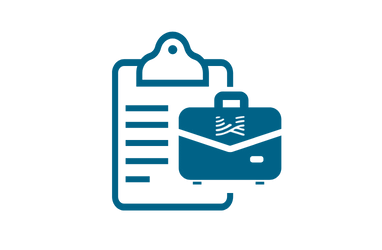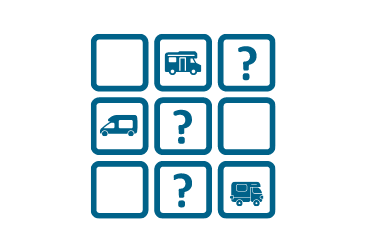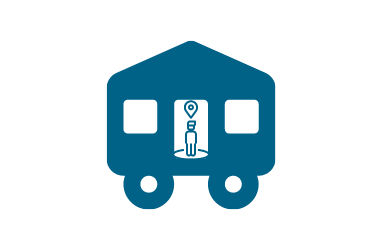Driving a Motorhome in New Zealand for the First Time
Driving a much larger vehicle than your car can feel a little intimidating. That’s normal — so we’re here to reassure you that there’s no need to lose any sleep before you get behind the wheel of a motorhome.
Find out how easy it is to drive, manoeuvre, and park a motorhome — and how driving on New Zealand roads may differ from your home country.
Table of Contents
How driving in New Zealand is different
Exploring New Zealand by campervan is a fantastic way to see its beauty. If you’re from overseas, you’ll likely find that driving in NZ is a little different to your home country.
To help you feel super comfy in the driver’s seat, we’ve outlined some of these differences below.
Arriving on a long haul flight
Give yourself time to recover from any jetlag by planning to stay a night or two in your arrival city. Driving around an urban area in your motorhome hire will help you adjust to New Zealand's road conditions and road rules — before taking on the highways.
Kiwis drive on the left
All Wilderness motorhomes are right-hand drive — and all vehicles in New Zealand are driven on the left side of the road.
If you’re not used to driving on the left, take some time to get familiar with your right-hand drive motorhome before hitting the open road.
You’ll find a reminder to drive on the left on your motorhome’s windscreen — and on road markings at tourist hotspots.
There’s a greater risk of driving on the wrong side of the road if you’re tired. Plan to avoid driving soon after arriving off a long flight or if you’re not well rested.
Travel times are often longer than you expect
Due to its isolation in the Pacific Ocean, New Zealand may look like a relatively small country on the map, but it’s deceptively long.
Superimpose New Zealand over Europe, and it would stretch from Northern Morocco all the way to Paris.
Travel times will take longer than you expect because:
- Large motorhomes can’t travel as fast as cars — they take more time to slow down and speed up
- Most of the roads you’ll use aren’t long, straight highways
- The best scenic roads are often narrow, winding and mountainous — take your time and enjoy the scenery.
Get an idea of travel times for some of our most popular routes from these suggested itineraries.
Give way at intersections
Always use your indicators when turning. At a stop sign, you have to come to a complete stop — and then give way or yield to all traffic.
At a give way sign, slow down and get ready to stop. Give way to all traffic.
At intersections where there are no signs, or you and another vehicle are both waiting at stop or give way signs, it's best to come to a complete stop and give way to the other traffic.
Driving to speed limits
Speed limit signs show the maximum speed you can travel. However, due to road or weather conditions, you may need to drive at a slower speed at times. Different speed limits apply throughout New Zealand — so keep an eye out for speed limit signs.
On most of New Zealand’s main roads, the speed limit is 100km/h unless a sign says a lower speed applies. In urban areas, the speed limit is usually 50km/h unless a sign says otherwise.
There are hundreds of hidden speed cameras around the country, so we strongly recommend that you obey New Zealand speed limits. Exceeding our speed limits is against the law — and it can result in defaulting on your insurance.
Plan your exits
Before deciding to drive down a narrow road or enter a tight space, be sure you'll be able to turn around or reverse out again. Motorhomes are slightly more difficult to manoeuvre when space is restricted — compared to cars.
If you see a sign showing that a road will be difficult to turn around or is unsuitable for motorhomes, campervans or caravans, don't drive down it. Also, be wary of no-exit roads.
Livestock are road users too
Cars, bikes, and heavy vehicles aren’t the only ones using New Zealand roads. Livestock also like to have their turn — especially sheep and cows.
They usually appear on unpaved side roads but can also pop up on main roads. Keep an eye out for the occasional roadside farmer signalling you to slow down for forthcoming livestock.
Dealing with the weather
Be prepared for all weather regardless of the time of year. New Zealand's weather is unpredictable — there can be snow in summer, heat in winter, and plenty of wind in between.
Bad weather events can:
- Temporarily close highways due to windblown trees
- Block roads and cause detours because of flooding or landslides
- Create dangerous, icy roads with black ice where there’s little sun.
Watch out for strong winds. High-sided vehicles like motorhomes are more prone to being pushed around on the road in powerful gusts. To prevent having a single-vehicle rollover, pull over to the side of the road at a safe rest spot and wait for the wind to drop.
Be prepared to adjust your speed and expected travel times based on the weather.
Corner road signs
New Zealand roads have a maximum speed limit of 100km — with a few exceptions. Driving at this speed on many rural roads can be unsafe, so you’ll need to adjust your speed for their conditions.
You’ll frequently see recommended speed signs on the corners of winding roads. These are a useful guide as to how fast you should take each bend.
Crossing the train tracks
Some railway crossings in rural areas don't have active warning indicators. All are signposted, but you’ll occasionally see some without bells or lights.
It’s important to slow down when approaching uncontrolled railway crossings and prepare to stop.
Taking breaks at rest areas
One of the great conveniences of travelling around this picturesque country is the ease of pulling over and soaking up the scenery.
Rest areas are marked at convenient and safe locations on busy roads. These roadside spots are ideal for breaks to interact with nature. Plan to take regular breaks every two hours — so you stay refreshed and alert when back on the road.
One lane bridges
Even New Zealand’s main highways have one lane bridges. Only traffic from one side can drive across at a time.
The NZ Transport Agency (Waka Kotahi) clearly outline how one lane bridges in New Zealand work. If you’re in doubt when approaching a single lane bridge, slow down and prepare to stop.
Dedicated parking spaces for your motorhome
New Zealand has plenty of parking spaces for larger vehicles in popular tourist areas. You’ll discover that it’s a delight to view the amazing scenery up close and personal from the comfort of your motorhome.
Motorhome parking zones are longer and wider than normal car parks. You’ll find them easy to glide into and park up.
If you’ve hired a motorhome that’s 6.5m long or less, you’ll have no trouble fitting into a standard car parking space.
Take care when parking your recreational vehicle. Be aware of low-hanging trees and building overhangs. More than 50 percent of motorhome accidents occur while parking or visiting service stations.
Find out more about where you can park your motorhome in New Zealand.
Driving a motorhome rental in New Zealand isn’t too different from driving a car. It’s therefore not surprising that a standard car licence is all you’ll likely need.
New Zealand citizens and residents
As a local, a class 1 car driver licence will be adequate to rent and drive most motorhomes throughout the country.
If you have a full class 1 driver licence, you can drive a motorhome with a gross vehicle mass (GVM) of 6,000 kg or less.
If you have a learner or restricted class 1 driver licence, you may be able to drive a motorhome with a GVM of up to 6,000 kg and an on-road weight of 4,500 kg or less. However, be sure to check the following with the rental operator before making a booking.
- Whether any licence type other than full is accepted.
- The minimum age of the hirer.
To drive a Wilderness motorhome, you must be aged 21 or over and hold a current full driver licence. See our terms and conditions for more details.
Find out more about driver licence classes in New Zealand.
International visitors
As an international visitor looking at motorhomes or campervans for hire, you’ll need either an:
- Overseas driver licence, or
- International Driving Permit (IDP).
International Driving Permits
If your IDP isn’t in English, you’ll need to get it translated in order to rent a motorhome and drive it in New Zealand. The translation must be supplied by one of these authorised agencies.
- A diplomatic representative at a high commission, embassy or consulate.
- The authority that issued your licence.
- A Waka Kotahi authorised translation service.
You’ll need to show the original permit — rather than a copy of it when collecting your rental motorhome and if stopped by the New Zealand Police. Keep in mind that you’ll also need to carry your current driver licence that the permit is based on.
Check your expiry date
As with other important documents like your passport, it’s important to double check the expiry date on your overseas driver licence or IDP — to ensure it’s still valid.
Converting to a New Zealand licence
An overseas driver licence can only be used for a year. If you’re planning on staying in New Zealand for more than 12 months, you’ll need to apply for a New Zealand driver licence.
Find out more about converting to a New Zealand driver licence.
Digital driver licences
Currently, digital driver licences aren’t used in New Zealand. Some government agencies and rental operators may be familiar with them but others won’t.
Your best approach is to travel with the physical copy of your driver licence to avoid any issues. Stay up-to-date with what you need to drive on New Zealand roads.
Lawfully driving a motorhome in New Zealand
Let’s highlight some of the key info you need to know to drive legally in New Zealand.
Carry your current driver’s licence
Ensure you always carry your current full driver licence or your International Driving Permit (IDP) — and its English translation (if required).
Find out more about what you need to drive on New Zealand roads.
Seatbelts are a non-negotiable
All drivers and passengers in your motorhome must wear a seatbelt while the vehicle is in motion. Any kids aged between zero and seven are required to be seated in a suitable child restraint.
At Wilderness, we can help you out with a child restraint for your little one. Our superb reservations team will work out which child seat you need and our helpful adventure support team can install it.
Read more about securing your child in a Wilderness motorhome.
Driving behaviours to avoid
Like most other countries, New Zealand has common sense laws around:
- Mobile phone usage — you must mount your phone and use bluetooth while driving
- Speed — check out these extensive guidelines around speed limits and speed signs in New Zealand
- Drink driving — be aware of the alcohol and drug limits which carry heavy penalties. Also be mindful of your motorhome insurance. It may not cover you if alcohol or drugs are in your system and your vehicle is damaged or stolen.
Always drive according to the road, traffic and weather conditions rather than always at the speed limit.
See our terms and conditions for extra detail on your responsibilities as a Wilderness customer.
Driving a Wilderness motorhome
All of our Wilderness motorhomes are relatively simple to drive, so there’s no need to worry if you’ve never driven one before. Compared to how you normally drive a car, there’ll be a few minor adjustments.
Adapting to a larger vehicle
Some people find that being behind the steering wheel of a motorhome feels easier than driving a regular car. This may be because they:
- Are sitting higher and have better visibility
- Feel more comfortable in a motorhome’s driving position.
The key is to remember that you’re driving a larger vehicle. Motorhomes take longer to accelerate and slow down. Be sure to wait for a longer gap than you might usually before pulling into traffic — and keep a longer following distance than usual.
Use a low gear when driving on downhill slopes to avoid overheating the brakes.
A motorhome is much higher than a car, so you’ll need to think twice before pulling into that drive-through, entering an underground car park or navigating a rural road with low overhanging branches.
Take a look at our tips for planning your first New Zealand motorhome trip.
Hiring a size that suits you
Wilderness motorhomes come in an array of sizes — from 5.9m to 7.4m long. The shorter ones are easier to manage on the road while the lengthier ones have more internal space.
Check that your licence permits you to drive a vehicle with a gross vehicle mass (GVM) of up to 3,650 kg.
Handling a motorhome around corners
Turning and handling will feel slightly different in a motorhome because it's longer and higher than a car.
A motorhome's higher centre of gravity makes it less agile than a car, so you’ll need to avoid cutting corners and instead take them slower and turn wider. Tail swing is something to also be aware of when navigating corners — especially when driving a larger motorhome over seven metres long.
Keep these points in mind when you’re:
- Making a three-point turn
- Parking in a tight car park
- Reversing.
All Wilderness motorhomes have a low profile, making them easier to handle than higher overcab types — which are renowned for body roll and feeling unstable when cornering.
Taking weight and speed into account
It goes without saying that campervans and motorhomes are heavier than your average motor vehicle. As a result, you’ll need to drive slower than other traffic on:
- Open roads — so you have enough time to slow down and stop
- Winding roads — where your vehicle will be less agile than a car
- Narrow bridges and overpasses
- Steep hills.
If your motorhome has a maximum speed of 90km on the open road (such as our Double, King/Twin and Suite options), be aware of traffic building up behind you. Be courteous and pull over to safely let other drivers pass — rather than panicking.
Our Compact motorhomes can legally drive at 100km where signposted.
Reversing with relative ease
Motorhome reversing can be trickier than in a car — the vehicle size and lack of a rear window are challenging.
All Wilderness motorhomes come installed with reversing cameras. Using them in combo with the large side view and rearview mirrors will significantly improve your vision.
Ask one of your travel buddies to stand behind your motorhome to act as another set of eyes when you’re manoeuvring into tight spaces.
Learn more about the ease of driving a Wilderness motorhome.
Holidaying stress-free with Wilderness
When you decide to explore New Zealand in a Wilderness motorhome, you’re choosing one with all the added features of a modern European vehicle. Some of these include:
- Anti-lock Braking System (ABS)
- Dual airbags
- Automatic transmission
- Hill holder — no need to use the handbrake when starting on a hill
- An adjustable driver’s seat
- Large wing mirrors and a reversing camera
For more information, read our guide to modern motorhome safety features in NZ.
Driving on unpaved roads
The chances of finding an idyllic remote beach or an off-the-beaten-track campsite are greatly enhanced if you’re permitted to drive on gravel or unpaved roads. With a Wilderness motorhome, you are.
Our standard insurance will cover you on any road that’s suitable for motorhomes — whether it’s a ski field access road or a backcountry trailhead one. Check our rental terms and conditions to ensure you’re aware of your responsibilities when choosing to drive on unpaved roads.
Be aware of driving or parking on soft ground. You'll be more likely to get stuck in a motorhome than in a car.
Learn more about what makes Wilderness motorhomes easy to drive.
Resources to help you feel confident
For more info on driving in New Zealand, Waka Kotahi offer two comprehensive guides.
The second option is available in English plus ten other languages.
Ready to Go?
It won’t take long to feel confident and comfortable behind the wheel of your Wilderness motorhome. If you have any further queries, please get in touch with our team.
Find out which is the right motorhome for your travel plans.





